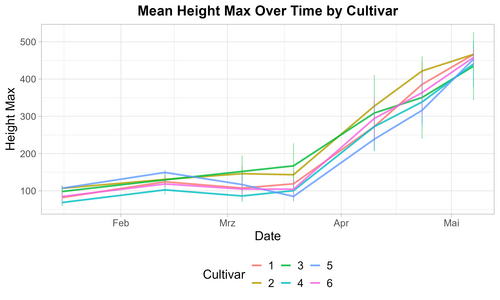One aim of the scientific research of the Institute of Plant Protection in Arable Crops and Grassland at the Julius Kühn Institute (JKI) is the development of targeted and sustainable approaches for weed management in cropping systems. In order to adapt weed control strategies to the weed species present in a field as efficient as possible, extensive knowledge of the morphological and functional characteristics (“traits”) of the weeds and their interactions with the crops is required. Traits such as plant height, seed production or biomass produced vary greatly between the different weed species, but can also vary within a species. Therefore, it is necessary to measure the relevant traits on a large number of weed species as well as individuals of a single weed species, which is time-consuming if repeated manual measurements are required.
In order to automate the collection of traits for different weed species, the Institute of Plant Protection in Arable Crops and Grassland at the JKI uses the “Trait finder” from Phenospex. This 3D scanner makes it possible to collect a large number of traits for a large number of individual plants in a short time. A further advantage is that the assessments can be repeated over the growing period without plant destruction, allowing the development of the traits to be monitored over time.
Application example: Shading tolerance of weeds
Plants compete with each other for resources. An essential and scarce resource is light. One approach to manage weeds is to provide a growth advantage to the crop so that it can then shade and suppress weeds. In an experiment focusing on the influence of shading intensity on weed development, the TraitFinder was used to measure morphological parameters of the three weed species Viola arvensis, Stellaria media and Alopecurus myosuroides. As part of the experiment, the development of the three weed species under different shading intensities was assessed. For this purpose, the leaf area and plant height were automatically measured at regular intervals on individual weed plants in pots using the TraitFinder. In addition, the development of the biomass of the individual plants was estimated. This facilitates a precise assessment of the plant growth depression caused by heavy shading for these weed species.



